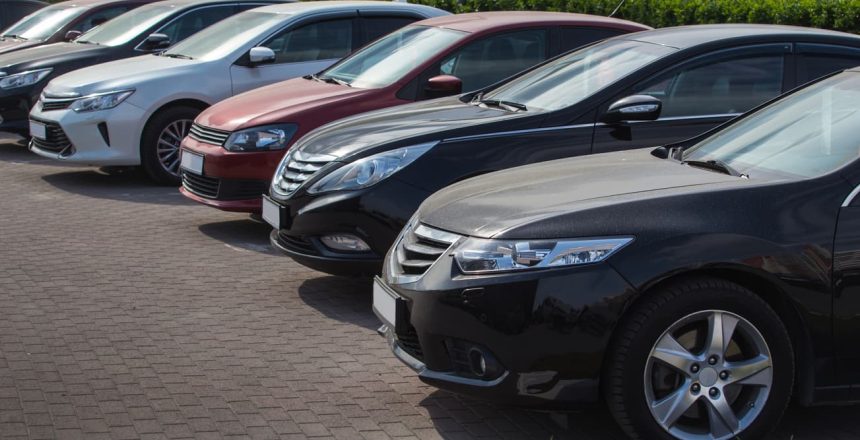Empty dealer lots and painstakingly high prices for new and used cars continue to beset buyers with car shortages that will continue into the second half of 2022.
Key Takeaways:
- Microchip shortage continues to persist in the auto industry
- Car dealers grappling with low car inventory
- Limited incentives from car manufacturers
- Car buyers will pay more for new cars
The past year was tough for car dealers and new car buyers. And 2022 looks to be no different. Will inventory rebound and car prices normalize? If you don’t want to postpone a car purchase, what are your options for buying a car? Here’s a low down on 2022, what’s ahead for the auto industry, and whether you should put off your decision to buy a car.
What does the auto market look like?
Car inventory levels have fallen to their lowest since the global financial crunch of the late 2000s. However, vehicle production is on an upward trajectory. Top automakers believe that shortage won’t get in the way of vehicle production.
While the worst of the car inventory crisis might be behind us, automotive analysts project that chip shortages and other limiting factors will curtail production till 2023.
Car sales is expected to surge in the second half of 2022 and may rebound to pre-covid levels, for better volumes in 2023 and 2024. However, scarce raw materials and workforce challenges could prolong the crisis.
Car sales forecast for 2022
Market analysts are cautiously optimistic with their sales forecasts for 2022 due to car market volatility. Projections range from about 15.2 million units to 16 million or slightly more, up from an estimated 15 million in 2021.
What’s ahead for the rest of 2022? Pretty much the same trend we saw in the past year. New car buyers will face higher prices while car dealers will grapple with low inventory. On the bright side, shoppers looking for electric cars have plenty of options.
Low car inventories
Eager to get a new car? Not so fast. Car dealers will continue to have nearly empty lots and receive fewer customers. And the ripple effect is being felt by car dealer auto transport services. If you’re in the market for a new vehicle, expect to pay near sticker prices or slightly more on brand-new cars.
Microchip shortage continues to bite, but carmakers are wiggling their way and learning to adapt to push production lines. As semiconductor manufacturing resumes in Asia, its likely chip shortage will ease in the coming months.
Related article: How to Buy the Car You Want Despite the Global Chip Shortage
Higher prices for new vehicles
As vehicle demand grows, new car prices are on the rise. New car buyers will dig deeper into their pockets to get their favorite rides. In 2022, carmakers shipped 8 million few cars than anticipated due to part shortages. Even if production resumes, car dealers won’t likely build back inventories for the remainder of 2022. Expect limited choices and surging prices to continue. Industry data shows a new car costs $8,000 more than in 2021.
Historically, car buyers have been flocking dealer lots across the country to grab irresistible holiday deals and end-of-the-year sales. Any holiday season and year-end deals? Car sellers and dealerships may not entice would-be buyers with incentives till early 2023 or thereabouts.
What are your car-buying options?
Four options are on the table for new car buyers. You can:
- wait for the market to stabilize
- buy a used car
- look for an electric car
- trade in your vehicle
While soaring used car prices are bad news for those who can’t afford brand-new cars, 2022 might be a good year to trade in your vehicle. Higher trade-in prices means extra capital that can lower the finance share for purchasing a new ride. Low interest rates can take the sting out of monthly car payments.
Car buyers going online
Pre-COVID, buying a car meant walking into a local dealership, perusing papers, and waiting for credit approval after intense price negotiations. Things have changed.
Nearly 30% of new car purchases are now made online. If you’re looking for a used car, you can bypass traditional dealerships and fast-track your purchase with online used-car sellers. Low inventory has changed the belief that you can walk into a dealership on a Saturday morning and drive off with a new ride just in time for a weekend trip.
Because car dealers are hiking new car prices, financiers value those at 120% more than their actual value. Such outrageous value inflation means it’s difficult to get a new car loan with less-than-perfect credit. And if you do get a loan, the lender will slap you with a higher interest rate.
How long will you wait?
Three months, half a year? Perhaps a little longer. Consistent low car inventory means demand is at an all-time high. Enthusiastic car buyers snap up cars faster than they roll off the assembly line. As a result, car buyers put in orders for new cars even before they’re shipped to dealer lots.
Anyone seeking to buy a car without putting an order will wait for several months – a tough situation. Meanwhile, you can learn how auto shipping works while waiting for your order to be processed.
Ship your car with us
We know buying and shipping a car can be a real hassle. Don’t worry. Mercury Auto Transport can ship your car state to state or to any U.S. destination for a flat fee. Our friendly and helpful agents are a phone call away and can help you find the best deals from top carriers. For fast and professional service, get in touch with us today.






